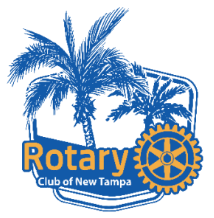OUR GUIDING PRINCIPLES
MOTTOES OF ROTARY
Service Above Self and One Profits Most Who Serves Best, Rotary’s official mottoes, can be traced back to the early days of the organization.
In 1911, the second Rotary convention, in Portland, Oregon, USA, approved He Profits Most Who Serves Best as the Rotary motto. The wording was adapted from a speech that Rotarian Arthur Frederick Sheldon delivered to the first convention, held in Chicago the previous year. Sheldon declared that “only the science of right conduct toward others pays. Business is the science of human services. He profits most who serves his fellows best.”
The Portland gathering also inspired the motto Service Above Self. During an outing on the Columbia River, Ben Collins, president of the Rotary Club of Minneapolis, Minnesota, USA, talked with Seattle Rotarian J.E. Pinkham about the proper way to organize a Rotary club, offering the principle his club had adopted: Service, Not Self. Pinkham invited Rotary founder Paul Harris, who also was on the trip, to join their conversation. Harris asked Collins to address the convention, and the phrase Service, Not Self was met with great enthusiasm.
At the 1950 Rotary International Convention in Detroit, Michigan, USA, two slogans were formally approved as the official mottoes of Rotary: He Profits Most Who Serves Best and Service Above Self. The 1989 Council on Legislation established Service Above Self as the principal motto of Rotary because it best conveys the philosophy of unselfish volunteer service. He Profits Most Who Serves Best was modified to They Profit Most Who Serve Best in 2004 and to its current wording, One Profits Most Who Serves Best, in 2010.
THE FOUR WAY TEST
The Four-Way Test is a nonpartisan and nonsectarian ethical guide for Rotarians to use for their personal and professional relationships.
The test has been translated into more than 100 languages, and Rotarians recite it at club meetings:
Of the things we think, say or do
- Is it the TRUTH?
- Is it FAIR to all concerned?
- Will it build GOODWILL and BETTER FRIENDSHIPS?
- Will it be BENEFICIAL to all concerned?
HISTORY OF THE BELL
In 1922, U.S. Rotarians organized an attendance contest. The challenge was that the losing clubs would join in giving the winning club a prize. The Rotary Club of New York City was declared the winner they were awarded a prize bell from a popular patrol boat. The bell was placed on wood that came from HMS “Victory,” Admiral Nelson’s vessel at the battle of Trafalgar.
As on ships, the bell used in Rotary meetings represents order, discipline and the timing that guides us through the weekly meetings. The bell chime reminds Rotary meeting attendees to stand beginning each Rotary meeting. At the Rotary Club of New Tampa the bell chime at the end prompts us to stand and recite the Rotary Motto. The gavel symbolizes the authority invested in the Rotarian elected as our club president. When presidents transmit their positions to their successors at the end of their year, they give the bell their last hit and turn the gavel over to their successor, symbolizing the transfer of authority.
DEI
Rotary’s core valued are fellowship, integrity, diversity, service, and leadership.
All club members and other participants including Rotary program participants, Alumni, project partners, and representatives of Rotary are expected to comply with this code of conduct, be considerate and contribute to a collaborative, positive, and healthy environment in which all are respected and valued.
We will use respectful language, be supportive, foster a welcoming and inclusive environment and celebrate diversity.
MORE (link https://my.rotary.org/en/who-we-are/about-rotary/diversity-equity-and-inclusion)

